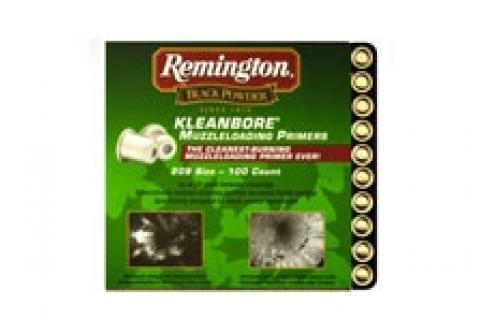
After years of hunting deer with a conventional inline muzzleloader using the various black powder substitutes available, a couple of years ago I switched to a semi-custom smokeless muzzleloader from Smith's Custom Guns and I couldn't be happier. In fact, I even considered selling my old inline because I was convinced that I would never use it again. However, I realized that smokeless muzzleloaders are not legal in all jurisdictions, so I decided to hang on to it in case I might need it again some day.
 |
| Believe it or not, not all makes and models of 209 primers are the same length — even in the same box. |
Well, that day came this past season when a friend of mine, Luigi, invited me for a couple of days of deer hunting with him, his dad and a family friend during western Ontario's late muzzleloader season. The only catch was that the friend, Peter, didn't have his own muzzleloader and he would have to use my old one. No problem.
I decided to try a different, relatively new type of powder for the inline, so I made a quick trip to my local Bass Pro Shops and picked up a can of it, along with one of the types of 209 shotshell primers specifically recommended by the powder manufacturer. We got up to the hunt camp a day in advance and headed out to a safe place to sight in my inline with the new powder, and to give Peter a chance to get comfortable shooting it. A number of shots later, the gun was grouping well and Peter knew how to load it and fire it. We were ready to hunt.
The first morning was uneventful, for everyone but Peter. Mid-morning, he had a nice buck and a doe walk out in front of his treestand and the buck offered him a standing broadside shot at about 60 yards. He cocked the hammer, took aim and pulled the trigger. Click! He broke open the action and saw that the primer was dented, so he dug around for a fresh one. By the time he was ready to shoot again, the buck had drifted away. Needless to say, I heard all about this when we broke for lunch, and I felt awful. I had to figure out what went wrong.
Luigi and I found a safe place to shoot the inline, and I squeezed off a shot using the same second primer that Peter had loaded. Click! Thinking that perhaps Peter's supply of primers had somehow gotten wet, I replaced the now-dented primer with a fresh one from my supply and took aim. Click! I was dumbfounded. Luigi suggested that I try one of his primers, a different brand than mine, so removed the third dented primer and tried Luigi's. Boom! Without reloading, I asked Luigi for another one of his primers to try. When I pulled the trigger, the cap snapped with a "pop" like it should. Needless to say, Peter used Luigi's primers for the rest of the hunt, but when I got home I began my quest to find out what had gone wrong.
Ignition problems are not unusual with muzzleloaders, but usually the problem is the powder not igniting, for whatever reason. In this case, the issue was the primers not detonating, although each was dented. A dud primer once in a while is not unheard of, but three in a row from a fresh box? Not likely. I wondered if there was perhaps some crud obstructing the firing pin from striking the primers with full force, so I disassembled the muzzleloader and gave it a thorough cleaning, but there wasn't any crud to speak of. So I started searching the Internet for an answer, and I finally found it.
Believe it or not, not all makes and models of 209 primers are the same length, and they aren't even all the same length within an individual box. (Someone has actually measured them; see attached table.) Now we're talking a few thousandths of inch difference, but apparently that can be enough to mean the difference between a primer being simply dented and being struck hard enough to ignite.
It seems that the "head space" on inline muzzleloaders can vary quite a bit, and some require shorter primers and some, like mine, require longer primers. In fact, there are even ultra-thin metal shims available to deal with too much head space. A word of caution, however, too much shimming or using primers that are too long can cause difficulties in closing the gun's action, or even result in a dangerous "slam fire" whereby the firing pin actually strikes the primer when a loaded gun's action is closed.
Good hunting.

- 5328 views

